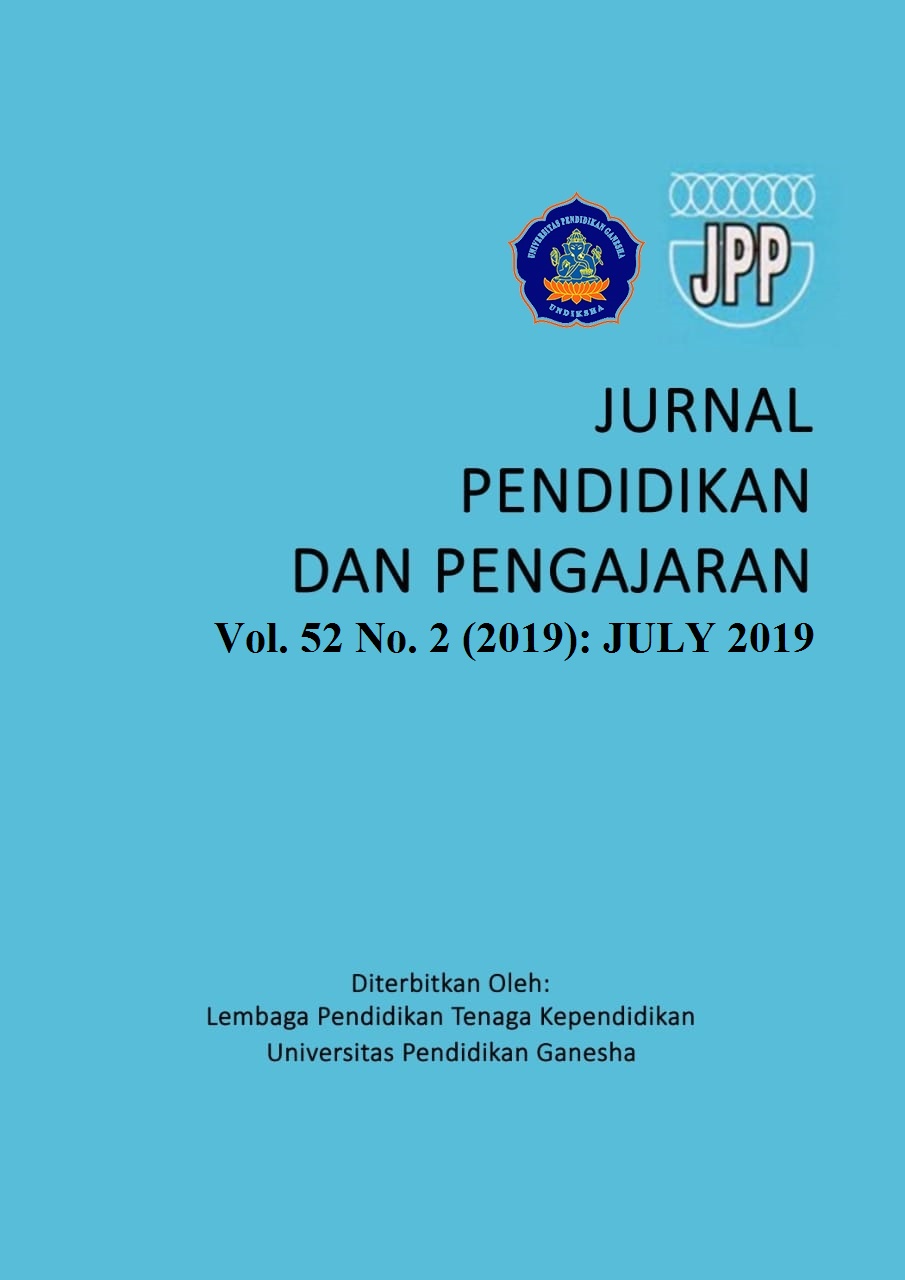Implementation of peer instruction flipped classroom to improve self-efficacy of underprivileged students
DOI:
https://doi.org/10.23887/jpp.v52i2.17879Keywords:
underprivilige students, flipped classroom type peer instruction flipped, self-efficacyAbstract
This study aims to examine the improvement of self-efficacy of underprivileged students. The design of this study is a non-equivalent control group involving two classes. The first class obtained learning using Flipped Classroom type Peer Instruction Flipped and the second class obtained conventional learning. The instrument used in this study is a self-efficacy questionnaire. This research was conducted in Class XI in one of the Vocational Schools in Ciamis. Data analysis using the Mann-Whitney test. The results showed that learning using Flipped Classroom type Flipped Peer Instruction had an influence on increasing the self-efficacy of underprivileged students.References
Arnold-Garza, S. (2014). The Flipped Classroom Teaching Model and Its Use for Information Literacy Instruction. Communications in Information Literacy, 8(1), 7–22.
Danker, B. (2015). Using Flipped Classroom Approach to Explore Deep Learning in Large Classrooms. The IAFOR Journal of Education, III(I), 171–186.
Fautch, J. M. (2013). The flipped classroom for teaching organic chemistry in small classes: is it effective? Chemistry Education Research and Practice, 16(1), 179–186. https://doi.org/10.1039/x0xx00000x
Jensen, J. L., Kummer, T. A., & Godoy, P. D. M. (2015). Improvements from a Flipped Classroom May Simply Be the Fruits of Active Learning. Improvements from a Flipped Classroom May Simply Be the Fruits of Active Learning, 14, 1–12. https://doi.org/10.1187/10.1187/cbe.14-08-0129
Kurt, G. (2017). Implementing the Flipped Classroom in Teacher Education : Evidence from Turkey. Educational Technology & Society, 20(1), 211–221.
Nanclares, N. H., & Rodríguez, M. P. (2016). Students ’ Satisfaction with a Blended Instructional Design : The Potential of “ Flipped Classroom ” in Higher Education. Journal of Interactive Media in Education, 2016(1), 1–12.
Roach, T. (2014). Student perceptions toward flipped learning: New methods to increase interaction and active learning in economics. International Review of Economics Education, 17, 74–84. https://doi.org/10.1016/j.iree.2014.08.003
Roehl, A. M. Y., Reddy, S. L., & Shannon, G. J. (2013). The Flipped Classroom : An Opportunity To Engage Millennial Students Through Active Learning Strategies. Journal of Family & Consumer Sciences, 105(2), 44–49.
Steele, K. M. (2013). The flipped classroom. Cutting-Edge, practical Strategies to Successfully" Flip" Your Classroom.-by Kevin M. Steele. Ed. S.
Sudrajat, D. (2008). Program Pengembangan Self-Efficacy Bagi Konselor di SMA Negeri Se-Kota Bandung. Universitas Pendidikan Indonesia.
Touchton, M. (2015). Flipping the Classroom and Student Performance in Advanced Statistics : Evidence from a Quasi- Experiment Statistics : Evidence from a Quasi-Experiment. Journal of Political Science Education, 11(1), 28–44. https://doi.org/10.1080/15512169.2014.985105
Wallace, M. L., Walker, J. D., Braseby, A. M., & Sweet, M. S. (2014). “Now , What Happens During Class ?” Using Team-Based Learning to Optimize the Role of Expertise Within the Flipped Classroom. Journal on Excellence in College Teaching, 25(3&4), 253–273.
Widiatmojo, B. (2004). Peranan Pola Asuh Orangtua dan Bimbingan Belajar tehadap Self-Efficacy dan Prestasi Belajar Siswa, Jurnal Ilmu Dakwah, 10 (2), 18.
Downloads
Published
How to Cite
Issue
Section
License
Authors who publish with Jurnal Pendidikan dan Pengajaran agree to the following terms:- Authors retain copyright and grant the journal the right of first publication with the work simultaneously licensed under a Creative Commons Attribution License (CC BY-SA 4.0) that allows others to share the work with an acknowledgment of the work's authorship and initial publication in this journal
- Authors are able to enter into separate, additional contractual arrangements for the non-exclusive distribution of the journal's published version of the work (e.g., post it to an institutional repository or publish it in a book), with an acknowledgment of its initial publication in this journal.
- Authors are permitted and encouraged to post their work online (e.g., in institutional repositories or on their website) prior to and during the submission process, as it can lead to productive exchanges, as well as earlier and greater citation of published work. (See The Effect of Open Access)





